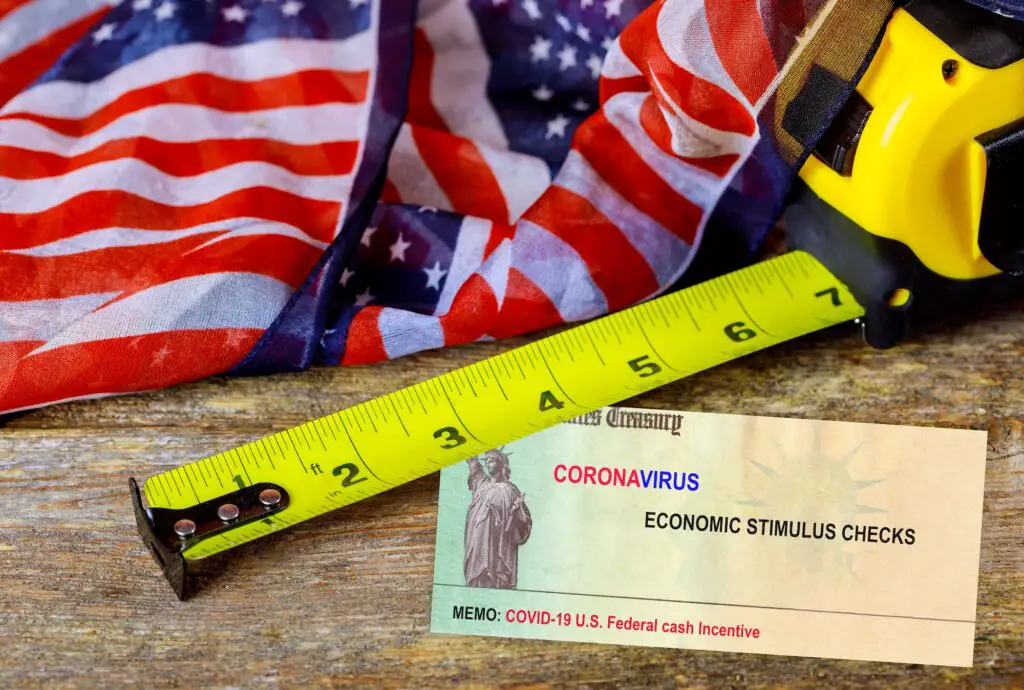The Coronavirus pandemic has created financial chaos for millions of Americans across the country. With uncertainty about the future and job losses impacting households nationwide, money has never been so scarce. Despite the tough times, the CARES Act has brought some much needed relief in the form of direct payments. One of the payments has been the “recovery rebate” worth up to $3,345 per household. As of May 29th, 2020, over 80 million Americans had already received this payment. In this article, we will explore who qualifies for the recovery rebate and how to claim it.
Overview of the Recovery Rebate
The recovery rebate is part of the CARES Act and it works by providing direct payments to Americans — up to a maximum of $3,345, depending on personal circumstance. These payments are designed to help ease the financial strain of the Covid-19 pandemic and are triggered automatically for Americans who qualify for them.
Eligibility Requirements for the Rebate
The eligibility requirements for the recovery rebate depend on a few factors, so it is important to get a clear understanding of them before you attempt to claim a payment.
Income Limits
The most important factor that determines eligibility for the recovery rebate is income. The payments are triggered for individuals and households whose AGI (adjusted gross income) falls below the threshold that has been set for the payment. The table below outlines the income limits for the rebate:
Income Limit Tax Returns Individuals Married Filing Jointly
$75,000 Individuals $1,200 $2,400
$112,500 Head of Household $1,200 $2,400
$150,000 Married Couples $1,200 $2,400
For households that have an income that falls above the limits set, there is a reduction in payment of $5 per $100 of income that exceeds the limit. So for example, for a married couple filing jointly with an AGI of $155,000, their recovery rebate payment would be reduced by $500.
Tax Filing Status
The next factor that affects eligibility for the recovery rebate is tax filing status. To qualify for the payments, individuals will need to file their tax returns in the same way they normally do. This means that individuals who normally file their taxes as “head of household” or “married filing jointly” will need to do so again in order to be eligible for the payments.
Additional Restrictions
In addition to the two factors mentioned above, there are a few other restrictions that could affect eligibility for the recovery rebate.
First, only U.S. citizens or resident aliens that meet the income and filing requirements are eligible for the payment.
Second, individuals and households must have a valid Social Security number to qualify for the rebate.
Third, individuals and households must have reported their 2019 income on their tax returns in order to be eligible for the rebate.
Fourth, individuals and households with an AGI of $3,000 or less will not be eligible for the recovery rebate.
Finally, children that have been claimed as dependents on a parent’s tax returns will not be eligible for the payment.
How to Claim the Rebate
Now that you’ve determined eligibility for the recovery rebate, it’s time to figure out how to claim the payment. Depending on how you file your taxes, you may be able to claim the payment either through paper check or direct deposit.
Paper Check
Individuals and households that are eligible for the recovery rebate and do not receive their taxes electronically can receive the payments by paper check. To do this, you will need to fill out and file form 1040 (or 1040-SR in the case of seniors). On the form, you will need to indicate that you are eligible for the recovery payment. After you’ve filed the form, you will be sent a paper check within three weeks.
Direct Deposit
For individuals and households that file taxes electronically, the recovery rebate can also be claimed via direct deposit. To do this, you will need to enter your bank routing number as part of your online tax filing or check your tax return if you have not set up direct deposit yet.
When you file your taxes with the IRS, they will detect whether you are eligible for the recovery rebate and proceed to deposit the payment into your bank account. The payment should arrive within three weeks of filing your tax return.
Extra Credit for Non-Filers
For individuals and households that are not required to file taxes but are eligible for the recovery rebate, there is an extra step to complete. To receive the payment, you will need to fill out the IRS Non-Filers: Enter Payment Info Here application. This application will help the IRS determine eligibility and deposit the payment into your bank account.
Final Thought
The recovery rebate has been a much needed source of relief for millions of Americans who have been impacted by the Covid-19 pandemic. To receive the payment, it is important to understand the eligibility requirements and determine the best way to file for the payment. Whether you file electronically or send in a paper check, these payments should help you get through these tough times.

